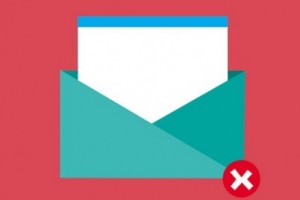Emails are a great, cost efficient way to reach potential customers, but quite often legitimate marketing campaigns are held back by spam filters. Before you launch your next email campaign, here are 12 things that you should know to avoid being flagged as spam.
1. Jargon
If your message sounds too good to be true, a spam filter will probably think it is. Using words and phrases like ‘free’, ‘urgent’, ‘sale’, and ‘once in a lifetime’ should be avoided.
2. Capital letters
Much like excessive punctuation, capital letters are key indicators of spam, and even if your email isn’t flagged as spam, no one likes to be yelled at by marketing campaigns.
3. Punctuation
Although adding excessive punctuation might attract the attention of the recipient, it is also likely to trigger a spam filter. Overenthusiasm is a red flag for spam, and will drastically reduce the chance of your message being delivered successfully.
4. Attachments
Many scam emails use attachments to send viruses and malware which has taught spam filters to be extra cautious of attached files. It is always best to avoid using attachments altogether, but if you do need to attach files some formats are better than others, .jpg and .pdf files are more likely to make it through than .zip attachments.
5. Unsubscribe button
Although no one want their recipients to unsubscribe, having an unsubscribe button is a legal requirement under the Spam Act 2003. Although some companies try to hide the unsubscribe button, it is in your best interest to make it prominent. If a recipient of an email wishes to opt out of receiving your emails and can’t find the unsubscribe button they are more likely to mark your message as spam. The more people mark you as spam the more likely future messages won’t make it to the inbox.
6. Subject line
Getting the subject line right is a huge factor in avoiding the trap of spam filters, make sure the subject clearly indicates the content of the email and the simpler they are the better. Always keep the subject line to 50 characters or less.
7. Colour
Spam filters can detect colours such as red and green and mark them down as spam. Although it might make your email seem fun and interesting, the more professional your emails look the more likely they are to make it to the inbox.
8. Format
Spam filters are suspicious of images. If an email only consists of an image, or contains a large number of images, spam filters become suspicious. Getting the text to image ratio right will help with your email deliverability.
9. Links
As great as it is to direct people to your website excessive links can set off spam filters. If you have to include links the fewer the better.
10. Reply to
If people can’t reply to the email that you sent, it not only makes your marketing campaign seem distant and impersonal and can also contribute to being marked as spam. Never send from noreply@ emails, always try something more inviting such as contact@ or enquiries@.
11. Identity
If the company you are emailing from cannot be easily identified your email won’t seem legitimate and won’t be complying with the Spam Act 2003. This includes providing sufficient contact details for your company. Both people and spam filters are more likely to approve of emails if they can identify the source.
12. Audience
In all marketing situations it is essential that you are targeting the right people. Make sure that your content is relevant to the person receiving the email. There is no use sending IT related marketing content to a communications manager, chances are they will send it straight to the spam folder. Identify key targets and only contact people who have an interest in what you are selling. A-ZGovBIZ maintains a range of up-to-date public sector lists so you know exactly who you should be contacting.



